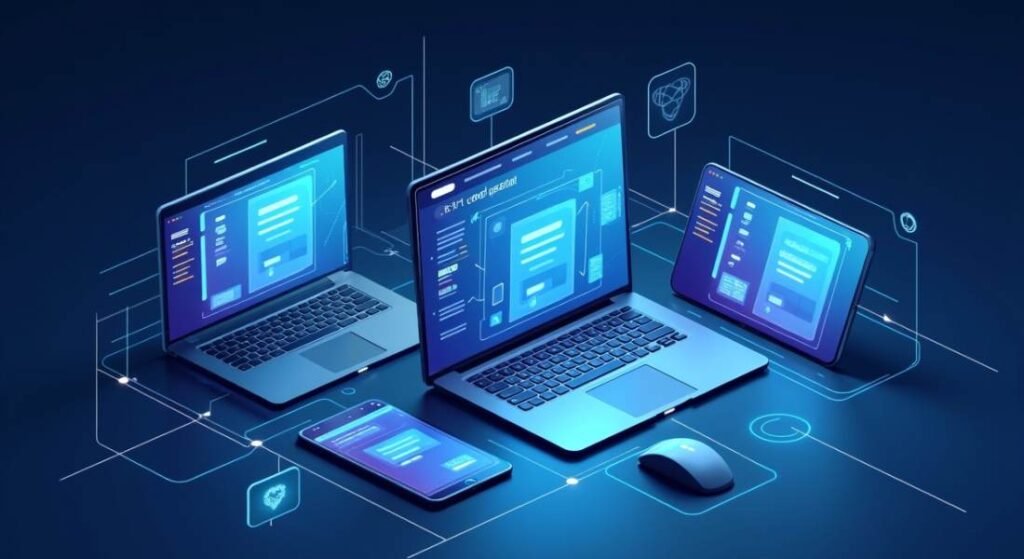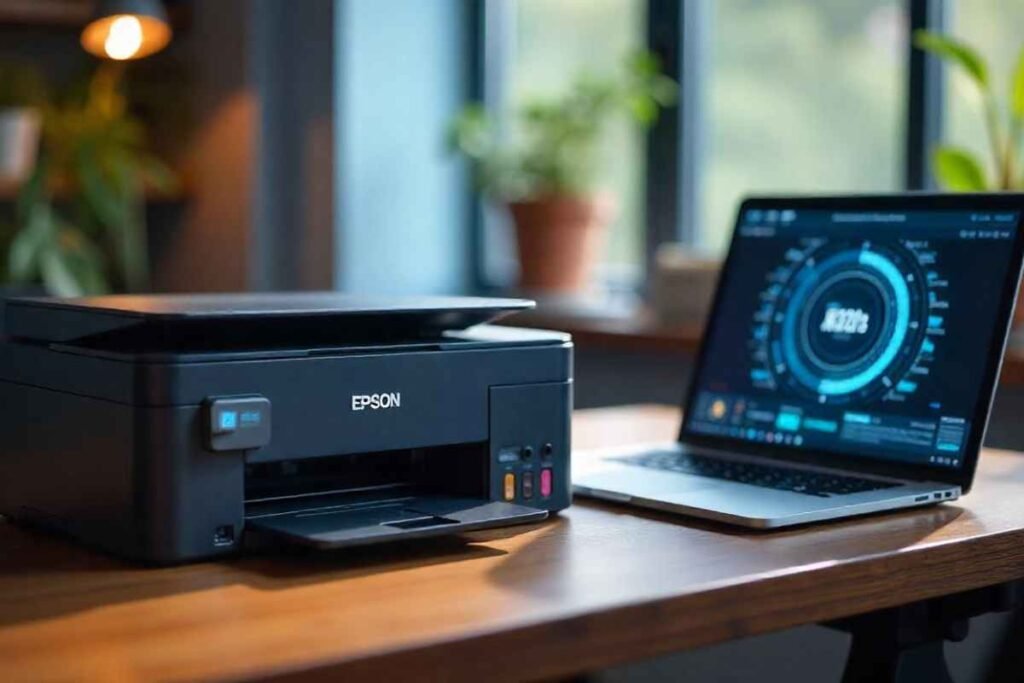Visual testing has become essential in modern software development. It goes beyond checking if features work; it ensures applications look exactly right across every device and browser your users touch.
Think about it: a broken checkout button on mobile or a misaligned form in Safari can cost you real money. These aren’t just cosmetic issues anymore. They’re business problems that hurt your bottom line and damage user trust.
Today’s apps must work perfectly across dozens of browsers, hundreds of devices, and countless screen sizes. Manual checking is impossible at this scale. That’s where automated visual testing comes in.
This review covers the best visual testing tools available in 2025, with special attention to LambdaTest’s comprehensive cloud-based approach that’s changing how teams handle visual quality.
What Is Visual Testing?
Visual testing compares how your app looks across different versions and environments to catch unintended changes. While functional testing asks “does it work?”, visual testing asks “does it look right?”
There are three main types:
- Visual regression testing – Compares current screenshots against approved baselines
- UI snapshot testing – Captures visual states of components to track changes over time
- Cross-browser visual comparison – Ensures consistent appearance across different browsers
Modern visual testing plugs directly into CI/CD pipelines. This means visual bugs get caught before they reach your users, not after they’ve already caused damage.
The scope goes beyond simple screenshot comparison. Advanced visual testing includes responsive design checks, accessibility validation, and cross-platform consistency verification.
Key Features to Look for in Visual Testing Tools
Not all visual testing tools are created equal. Here’s what separates the leaders from the rest:
Automated Screenshot Capture & Comparison
- Seamless capture across multiple environments
- Smart algorithms that spot real differences while ignoring minor rendering variations
- Fast, reliable comparison processing
Cross-Browser & Device Support
- Coverage across all major browsers (Chrome, Firefox, Safari, Edge)
- Support for multiple browser versions
- Comprehensive mobile device testing (iOS and Android)
- Different screen densities and form factors
Integration Capabilities
- Smooth connection with CI/CD platforms
- API access for custom workflows
- Support for popular testing frameworks
- Easy setup with existing development processes
Smart Visual Validation
- Reduces false positives through intelligent comparison
- Focuses attention on changes that actually matter
- Context-aware difference detection
Reporting & Collaboration
- Detailed visual difference reports
- Historical change tracking
- Team approval workflows
- Clear communication tools for design and dev teams
Scalability & Maintenance
- Handles growing test suites without performance issues
- Manages expanding device coverage efficiently
- Minimal ongoing maintenance requirements
Top Visual Testing Tools in 2025
The visual testing market has matured significantly, offering developers a range of powerful options tailored to different needs and workflows. Each tool brings unique strengths, from component-level testing to comprehensive cross-browser validation, including test management tools in software testing.
Storybook with Visual Add-ons Perfect for component-level visual testing that matches modern development practices. Test UI components individually before they affect larger areas. Excellent integration with design systems.
Cypress with Visual Plugins Combines end-to-end testing with visual validation. Add visual checks to existing functional tests for comprehensive coverage. Great for teams already using Cypress.
Playwright and Puppeteer Powerful browser automation with robust visual snapshot support. Offers fine-grained control and excellent performance for large-scale implementations. Best for teams with strong development resources.
BackstopJS Open-source flexibility for custom visual regression testing. Extensive customization options make it perfect for unique requirements or existing tool ecosystems.
LambdaTest: Visual Testing with Cloud-First Flexibility
LambdaTest offers a SmartUI platform, which stands out as a comprehensive cloud-native platform built specifically for visual regression testing and for teams who need scale, reliability, and extensive device coverage.
Core Visual Testing Features:
- Massive Browser & Device Coverage – Test across 5000+ real desktop and mobile environments, not just emulators
- Pixel-Perfect Comparisons – Automatic difference highlighting helps developers quickly understand visual changes
- Smart Comparison Engine – Reduces false positives by understanding context and focusing on meaningful differences
- Real Device Testing – Access to actual devices ensures results match real user experiences
Integration & Workflow:
- Seamless CI/CD Integration – Connects with popular tools without changing existing processes
- API Access – Build custom integrations that fit your specific workflow
- Automated Screenshot Comparisons – On-demand testing for both automated and manual approaches
- Minimal Setup Friction – Get started quickly without infrastructure overhead
Advanced Capabilities:
- KaneAI – Intelligent test creation and automated baseline management
- Predictive Analysis – Helps teams address visual issues proactively
- Enterprise Security – Advanced controls and compliance certifications for BFSI applications
- Dedicated Support – Enterprise-grade support for demanding performance requirements
Team Collaboration:
- Comprehensive Reports – Visual difference reports with clear highlighting
- Approval Workflows – Streamlined processes for legitimate design changes
- Historical Tracking – Audit trails of visual evolution over time
- Easy Sharing – Quick communication of visual findings across teams
LambdaTest eliminates the infrastructure headache of maintaining device labs while providing access to the latest browsers and mobile devices. For enterprise applications requiring high accuracy and compliance, it offers the security and scalability that traditional solutions can’t match.
Benefits of Automated Visual Testing for Organizations
Organizations implementing automated visual testing see immediate and long-term benefits that extend far beyond just catching visual bugs. The impact touches every aspect of the development lifecycle, from faster releases to significant cost savings.
Faster Release Cycles Automated visual validation removes manual review bottlenecks that slow deployments. Teams ship faster with confidence.
Significant Cost Savings Catching visual issues during development costs much less than fixing them after release. Organizations report major reductions in post-release defect costs.
Consistent User Experience Users get the same great experience regardless of their device or browser choice. This improves satisfaction and reduces support tickets.
Reduced Manual Work Automated systems check hundreds of configurations without getting tired or missing details. Quality stays consistent.
DevOps Enablement Visual testing automation supports rapid iteration and continuous deployment. Teams can innovate faster while maintaining quality standards.
Implementation Best Practices for Visual Testing
Getting visual testing right requires more than just choosing the right tool, it demands thoughtful planning and consistent execution. These proven practices help teams avoid common pitfalls and maximize their visual testing investment from day one.
Baseline Management
- Create clear processes for initial baseline creation
- Establish workflows for updating baselines when designs legitimately change
- Maintain consistency across different testing environments
- Regular review and cleanup to prevent baseline drift
Handling Dynamic Content
- Use data masking for variable content like timestamps or user names
- Set up consistent test environments to minimize variations
- Implement smart comparison algorithms that understand context
- Create stable test data sets for reliable comparisons
CI/CD Pipeline Integration
- Balance comprehensive coverage with execution speed
- Use parallel execution for faster results
- Prioritize critical user journeys for thorough testing
- Implement smart triggering based on actual code changes
Team Collaboration
- Create cross-functional processes for design and development alignment
- Establish clear approval workflows for visual changes
- Build shared ownership of visual quality across teams
- Regular communication about visual standards and expectations
Challenges in Visual Testing and How to Overcome Them
Flaky Tests from Environment Differences Minor rendering differences between test runs create unreliable results that teams stop trusting.
Solution: Use cloud-based platforms like LambdaTest that provide consistent testing environments and reduce environmental variations.
Managing Frequent UI Changes Fast-paced development can overwhelm teams with constant baseline updates and approvals.
Solution: Implement smart comparison algorithms and automated baseline management that adapts to legitimate design changes while flagging real issues.
High Maintenance Costs Basic visual testing tools often require more ongoing maintenance than teams expect.
Solution: Choose platforms with intelligent difference detection and automated maintenance features that reduce manual overhead.
False Positive Overload Too many insignificant differences can cause teams to ignore visual testing results entirely.
Solution: Advanced platforms use sophisticated algorithms to focus attention on changes that actually impact user experience.
Future Trends in Visual Testing
Visual testing continues evolving rapidly as new technologies reshape how teams approach quality assurance. Several emerging trends are set to transform visual testing over the next few years.
Smarter Visual Validation Tools are becoming more intelligent at understanding visual context and reducing false positives through advanced algorithms and pattern recognition.
Cloud Platform Growth More teams are moving to cloud-based solutions that eliminate infrastructure management while providing extensive device coverage.
Full-Stack Integration Visual testing is integrating with broader observability platforms, connecting visual quality with performance metrics and user experience data.
Accessibility Integration Visual testing tools are expanding beyond aesthetics to include accessibility compliance, ensuring applications work for all users.
Component-Level Focus Testing is shifting toward component-based approaches that align with modern development practices and design systems.
Conclusion
Visual testing isn’t optional anymore, it’s essential for delivering the polished, consistent experiences users expect. The complexity of today’s multi-device world makes automated visual testing a business necessity, not just a nice-to-have.
Choosing the right tool depends on your team’s needs, scale, and existing workflows. Consider your specific requirements, current toolchain, and long-term quality goals.
LambdaTest emerges as the standout choice for teams wanting comprehensive cloud-based visual testing. With 5000+ real device environments, intelligent comparison algorithms, and enterprise-grade features, it delivers the scale and reliability modern development demands.
The investment pays off through better user experiences, lower defect costs, and higher confidence in releases. As digital experiences become more critical to business success, visual testing becomes more valuable.
Ready to elevate your visual testing game? Explore LambdaTest’s comprehensive platform and see how cloud-first visual testing can transform your development workflow.


